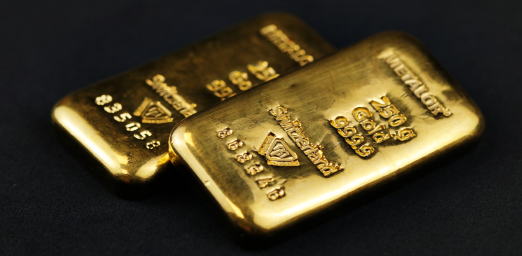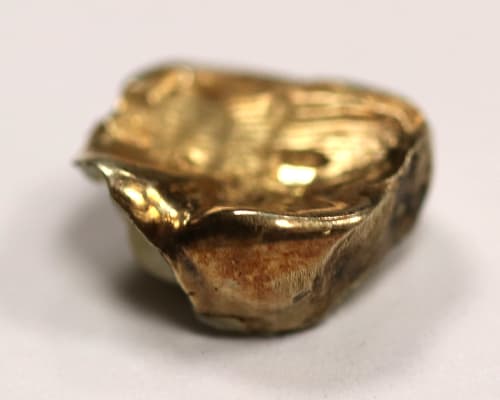
|
Key Takeaways:
• Gold is a versatile material with unique properties, including conductivity, resistance to tarnishing,
and malleability.
• Gold has diverse applications, including its use in technology, medicine, and industry.
• Gold mining has both environmental and social impacts, but it can also provide economic opportunities for communities and countries.
• The value of gold goes beyond its investment potential and is important in various industries and fields, ranging from aerospace to dentistry.
|
Introduction
Gold is traditionally associated with investing in precious metals and crafting and creating spectacular pieces of jewellery, but there are multiple uses for gold. Gold is a versatile material, which offers benefits far beyond aesthetic appeal and making money from investing in gold. In this informative guide, we’ll explore diverse gold applications, discussing gold in industry, technology and medicine.
What makes gold so useful? The scientific properties of gold
The dawn of gold mining marked a major development in history, paving the way for several industries and sectors to benefit from one of the most versatile and useful minerals on the planet. Gold has unique properties, which make it incredibly advantageous. These include:
- Conducts electricity and heat
- Resistant to tarnishing and wear
- Easy to mould and shape
- Combines with other metals to form alloys
- Iridescent shine and rich colour
- Can be melted, used in large, robust forms, or hammered into wafer-thin sheets
How is gold used?
Many of us are familiar with gold because we own gold jewellery, we’ve invested in gold or we’ve read about gold trading online or in the newspapers. Although the primary use of gold is to make jewellery and decorative pieces (up to 80% of gold supplies), there are multiple gold uses to explore. Here are some examples:
1. Gold in technology - Did you know gold is used in almost every electronic device?
If you own a mobile phone or any other electronic device, there’s a good chance that some of the appliances you use daily contain gold. Gold is commonly used to manufacture components of low-voltage appliances and devices, including phones, calculators, TVs and interactive digital assistants. Gold is a very efficient conductor, which is resistant to wear and corrosion, making it an excellent choice for small and medium-sized electronics. Gold is also used to create computer parts, including connectors used to fix microprocessors and memory chips to the motherboard.

2. Gold in medicine
If you’ve ever had a filling, you may have been offered a gold filling. Gold has been used in dentistry for centuries to fill cavities and restore decayed and damaged teeth. Gold is durable, hard-wearing and safe and some people prefer its aesthetic qualities to other types of metal fillings. Gold fillings can also make a statement for those keen to customise their smiles.

In medicine, gold is used to treat a small number of conditions, including rheumatoid arthritis, some types of cancer and lagophthalmos, which prevents the eyes from closing fully. Gold can be added to injections, implanted in cancerous tissue during radiation treatment or used in its natural form. Radioactive gold also has benefits for diagnostic procedures. Gold can also be found in many of the machines, devices and appliances used to treat and monitor patients in hospitals and other healthcare settings.
3. Gold in industry
Gold is used across a broad spectrum of industries, including aerospace, manufacturing, glassmaking and producing awards, trophies and medals. Did you know that gold has been used to manufacture and design every vehicle and spacecraft that NASA has ever launched?

The environmental and social impact of gold
The environmental impact of gold mining has been a subject of discussion for decades. Mining is an activity, which offers benefits and drawbacks. Gold mining enables us to take advantage of a precious, versatile natural resource, which has an extensive range of uses, but there is a downside. Mining of any kind can damage environments, affecting wildlife and local communities, and it produces waste products in the form of pollutants. The flip side is the social impact of gold.
Tapping into gold supplies provides opportunities for millions of people across the world. Gold mining is a lucrative income source for countries and communities and it can play a significant role in socioeconomic growth and development. Globally, mining companies that specialise in minerals, precious metals and gems employ over 40 million people (source). Thousands more earn a living by using gold to create and sell jewellery, build electronic appliances and manufacture parts. Investing in areas that have access to gold mines also has benefits in terms of enhanced and improved infrastructure and access to education and medical services.
Conclusion
Gold is one of the most useful and versatile chemical elements on the planet. Best known for its beauty and its ability to make investors money, gold has a wide range of applications. Gold is used across multiple industries ranging from aerospace and electronics to medicine and dentistry. The value of gold stretches far beyond its investment potential. It is hard, dense and durable, it’s an excellent conductor of heat and electricity and it can be moulded into all kinds of shapes.




















